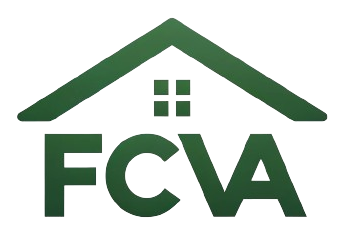What steps do you need to take after selling your house to ensure a smooth moving experience? If you’ve just closed the deal on your home, the next chapter of your life is just beginning, and navigating the next steps can feel overwhelming. Don’t worry; you’re not alone in this journey. Here’s a guide that breaks down the moving timeline after selling your house into seven essential milestones. This way, you can stay organized, focused, and ready to tackle each phase with confidence.
Understanding Your Moving Timeline
When selling your home, it’s crucial to have a solid understanding of the timeline that follows. The period after the sale may seem chaotic, but it provides a wonderful opportunity for a fresh start. By structuring your timeline, you can ensure that all necessary tasks are completed while minimizing stress.
A structured moving timeline includes several key milestones, each representing significant tasks that you need to complete. Here’s a closer look at what those milestones are and how to navigate them effectively.
Milestone 1: Confirm Your Closing Date
Once you have accepted an offer on your home, the first critical step is to confirm the closing date. This date represents when the transfer of ownership officially takes place, and it will set the stage for the rest of your moving timeline.
Why is the Closing Date Important?
Knowing your closing date allows you to plan your move accordingly. It sets parameters within which your packing, utility transfers, and final clean-up must occur. If you’re unsure about your closing date, reach out to your real estate agent for clarity.
Milestone 2: Create a Moving Checklist
Once you have your closing date in hand, it’s time to get organized. A moving checklist is your best friend during this phase. It ensures that you don’t overlook anything crucial as your moving day approaches.
What Should be Included in Your Moving Checklist?
Your moving checklist should encompass various tasks, from the packing process to notifying utility companies. Here’s a simplified version of what you should include:
| Task | Notes |
|---|---|
| Start packing non-essentials | Begin with items you don’t use daily |
| Notify schools of address change | If you have children, communication is key |
| Schedule moving truck or service | Research and book to avoid last-minute stress |
| Contact utility companies | Set up disconnection and new service |
| Change address with the post office | This can often be done online |
A well-prepared checklist not only keeps you on track but also provides a sense of accomplishment as you check off each completed task.
Milestone 3: Start Packing
Now that you have a checklist, it’s time to start packing. Begin with items that are not essential to your daily life. This phase may take longer than anticipated, especially if you’ve accumulated years of belongings.
Tips for Efficient Packing
- Room by Room: Tackle one room at a time. This allows you to stay organized and helps you avoid the overwhelming feeling of chaos.
- Label Boxes: Clearly label each box with its contents and the room it belongs in. This will make unpacking much easier.
- Use Proper Packing Materials: Invest in good-quality boxes, bubble wrap, and packing tape. Your belongings will be safer during transit.
Moving can be a perfect opportunity to declutter. If you come across items you no longer need or want, consider donating or recycling them. It lightens your load and contributes to a good cause.
Milestone 4: Notify Important Parties
Once your belongings are being packed, take time to notify essential parties about your move. This ensures that your important documents, bills, and communications reach you at your new address.
Whom Should You Notify?
- Services: Contact your internet, cable, and phone providers. Schedule disconnection and set up connections at your new home.
- Banks and Creditors: Update your address with any banks and credit institutions.
- Friends and Family: Share your new address with relatives and friends to keep them in the loop.
Having a list of parties to notify can alleviate the chance of missing someone important, ensuring that your transition is smooth.
Milestone 5: Order Moving Supplies
As you get closer to your moving date, make sure you’re stocked up on all necessary moving supplies. This includes boxes, packing tape, and bubble wrap, but don’t forget about the little tools that can make your life easier.
Essential Moving Supplies to Have
In addition to boxes and tape, consider these items:
| Supply | Purpose |
|---|---|
| Furniture pads | Protects furniture from damage during the move |
| Markers | For labeling boxes clearly |
| Stretch wrap | Great for keeping items together and cushioning |
| Dolly or hand truck | Saves effort when moving heavy items |
Being prepared with the right supplies ensures you won’t be stressed on moving day, scrambling for tape or boxes.
Milestone 6: Set Up a Moving Day Plan
As your moving day approaches, it’s time to create a detailed plan. This plan can help you keep everything organized and will ensure that the day goes smoothly.
Components of a Good Moving Day Plan
- Time Schedule: Create a timeline of when tasks should be accomplished on moving day, such as when to leave for your new home.
- Key Contacts: Make sure your friends or hired help know their roles and times.
- Essentials Bag: Prepare a bag containing items you’ll need on moving day, such as snacks, water, toiletries, and any essential documents.
Your moving day plan provides a structure to follow, reducing anxiety about what’s next.
Milestone 7: Settle into Your New Home
Congratulations, you’ve made it to your new home! But the work isn’t quite over yet. Settling in may take some time, and preparing your new living space is essential for your comfort and well-being.
Steps to Help You Settle in
- Unpack Strategically: Use your labeled boxes to unpack room by room, prioritizing essentials first.
- Setting Up Utilities: Confirm that utilities are connected and functioning as planned.
- Meet Neighbors: Take some time to introduce yourself to your new neighbors. Having a friendly connection can make the transition feel warm and inviting.
As you settle in, plan to take breaks and treat yourself to something nice during this transition period. Whether it’s an outing with the family or ordering your favorite food, it’s important to celebrate your new beginning.
Conclusion
Navigating the moving timeline after selling your house may seem daunting, but by following these seven key milestones, you can keep the process organized and manageable. Remember that it’s completely normal to feel a mix of excitement and anxiety as you step into this new chapter.
Arming yourself with the right information, tools, and plans can make your transition smoother. Take things one step at a time, and soon enough, you’ll be comfortably settled in your new home. If you need support or further guidance along the way, the team at FastCashVA.com is here to help—and remember, each step you take is a step towards not just a move but a fresh new start in your life. Safe moving!
Ready to sell your house fast in Virginia? FastCashVA makes it simple, fast, and hassle-free.
Get your cash offer now or contact us today to learn how we can help you sell your house as-is for cash!
Disclosure: As an Amazon Associate, I earn from qualifying purchases.



